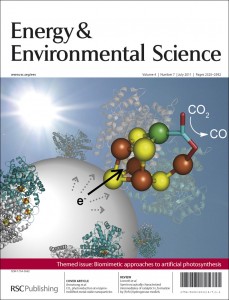There’s been lots of talks this week at the ACS about photocatalysis and water-splitting, across many different divisions and symposia – it seems to be a very ‘hot’ topic right now!
One highlight for me was a talk by Ryu Abe, who discussed his work on visible-light responsive photocatalysis for solar hydrogen production. He also covered his research about PEC water-splitting, using co-catalysts to improve stability.
Read Ryu Abe’s latest research in EES:
Fabrication of efficient TaON and Ta3N5 photoanodes for water splitting under visible light irradiation
Masanobu Higashi, Kazunari Domen and Ryu Abe
DOI: 10.1039/C1EE01878G














 In order to carry out water splitting using solar energy, the materials used should absorb visible light
In order to carry out water splitting using solar energy, the materials used should absorb visible light 
